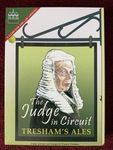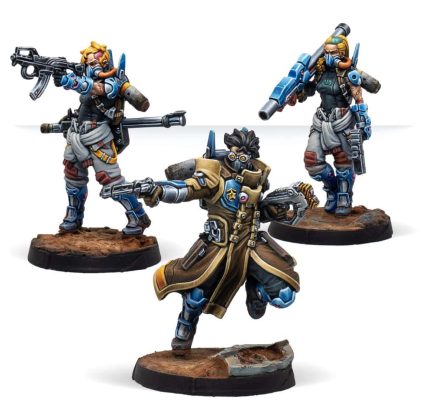Image: Tony BoydellWhen Francis Tresham passed away in October 2019, he left a fair number of unfinished games behind. When you realize that he tended to work on projects over a number of years and had multiple projects running side-by-side, that’s not so surprising.
One project that he started work on in 1985 was getting close to being published, but the final steps had not been taken. After discussion with his family in 2024, I agreed to see if I could get it over the finishing line.
That game was The Judge in Circuit.
The game is quite unlike anything he has ever done before. That is also not surprising as he was always coming up with new ideas and seeing whether they would fit into one of his projects — or indeed, whether he could create a project to go round the idea.
The Judge in Circuit is based on the concept that in the UK, some court judges move from one court to another, moving around that circuit and dealing with the crooks that need judgement at each court.
In the game, you play the part of the crooks. When you are up before the judge, he may sentence you to some time behind bars and send you to one of five prisons. The aim of the game is to get into those prisons, then get out and be sent to another prison. The game is won by being the first crook to get into the required number of different prisons.
Image: Tony BoydellFrancis said himself that winning this game is morally disgraceful and don’t blame him if your teenage daughter or maiden aunt cotton on to the essential facts of a successful career quicker than you, but if you lose, it can still be fun, and winning will give a sense of achievement.
The first thing I had to do was to find out how much work I was taking on. When returning from a driving holiday in Scotland, I stopped off at his daughter’s house in Durham to pick up the pieces.
My big surprise was finding that this involved filling my car to the roof with boxes of stuff, because the majority of the components had already been printed — in 2011.
The key component that was missing was the rulebook. There were a few physical copies, but no error-free print-ready electronic version. After trying to reformat that, I decided that the easiest option was to simply recreate it.
There was a separate prison board, which contained the tables you consulted to first find out what the judge you were facing would do; if he sentenced you to prison, you consulted the second to see where you ended up. It annoyed me that the first table you consulted was table 2, and the second was table 1, so I made a new version, swapping the table numbers over while retaining all of the information, but making it more logical.
The key thing for me was not to mess with the game in any way. It may be a little old-school, but that reflects its origin in 1985.
With the components and the rulebook sorted, the next job was to put some games together. The component set included boxes on flat sheets, game boards, luck cards, and various tokens and markers.
Image: Tony Boydell
Assembly involved folding up and gluing the box lids and bases, then filling each box with the right components.
One thing I wanted to preserve was that Francis always gave each box a unique serial number. The space for this was on the box, and as I had inherited his number stamps, I could surely get that sorted. Unfortunately, whenever I stamped a number on a box, the ink refused to dry and still smudged over a day later. My solution was transparent laser labels, so while the style might vary, the principle remained the same.
The final step was to apply shrinkwrap. Francis never did this, but I had the means, so it helped me to be sure which games were ready to go.
As for the game itself, well, it is a game more rooted in 1985 than today. It is a roll-and-move, but you don’t go round the outside of the board, you choose your route through the streets. You can move your own piece, or you can move one of the police pawns, or you can move judges round the circuit, so that when you meet one, he’s more likely to send you to a prison you haven’t visited before.
You can mitigate the die rolls for movement a little. If you don’t like the result, just choose to move three spaces instead.
The luck cards add some uncertainty. Will you get one that lets you get into a new prison, or one that stops someone else from doing the same?
The game difficulty, or length, can be adjusted by playing to a different number of prisons to be entered. It is a light game that is aimed at all ages and intended for family fun. Someone commented that it would be a good Christmas game, but that may depend on how you like to spend your Christmas time.
Whatever you do, don’t take the game too seriously!
Anyone interested in obtaining a copy can find more information on my website, which includes a link to the rulebook (PDF). Without shipping, the game is £35, with the majority of that going to the Tresham estate.

/pic8920003.jpg)
/pic8920008.jpg)
/pic8920010.jpg)
/pic9219374.jpg)



